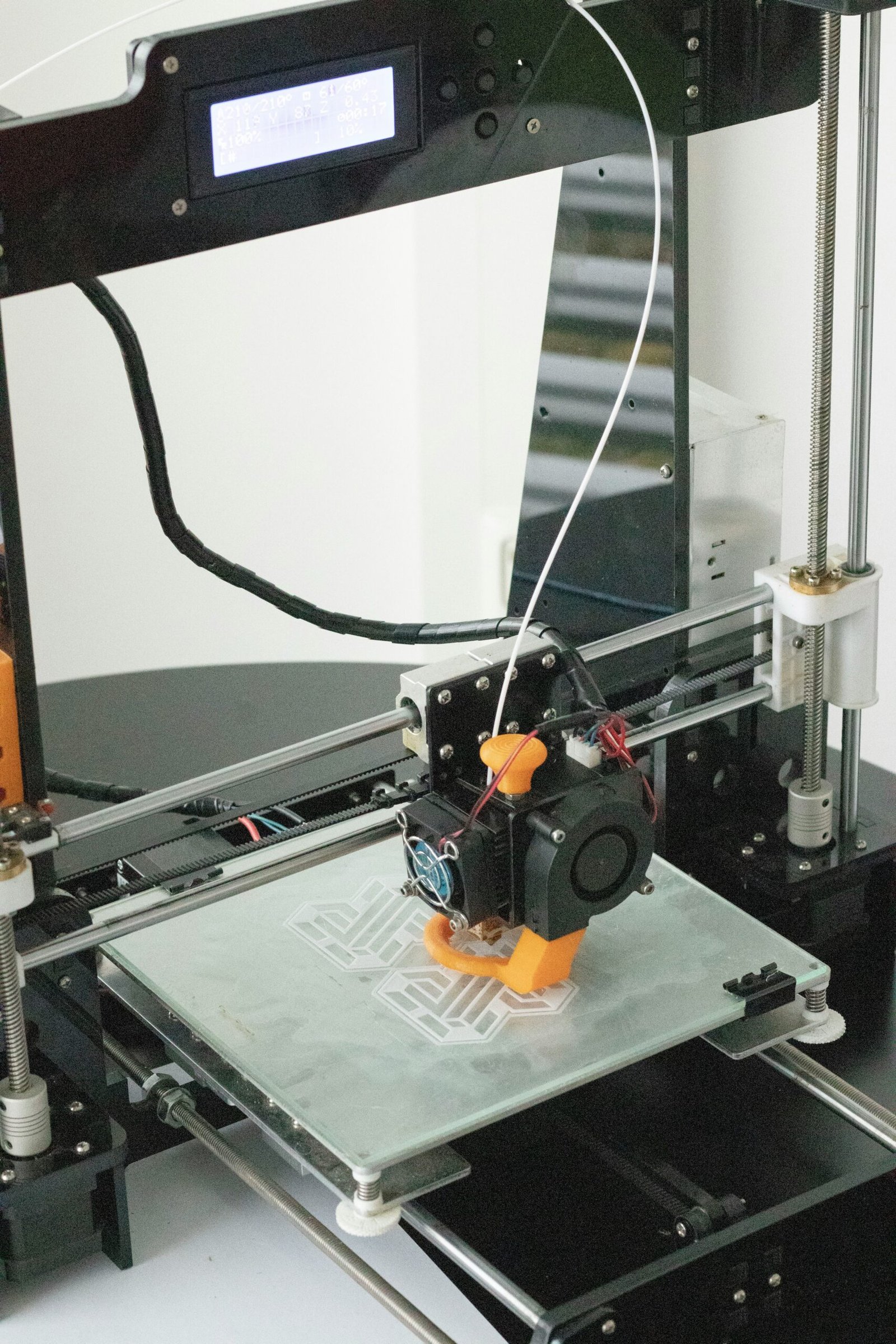Robotic Process Automation: Streamlining Business Operations for the Future
Introduction to Robotic Process Automation (RPA)
Robotic Process Automation (RPA) is a transformative technology that allows organizations to streamline operations and enhance efficiency. At its core, RPA uses software robots to mimic human interactions with digital systems. This allows businesses to automate repetitive and rule-based tasks.
This can range from managing data entry, and processing transactions, to handling customer inquiries. RPA will simplify processes and reduce human errors. It automates these functions. Employees are thereby freed to focus on more strategic activities.
The importance of RPA in the modern business environment can’t be overemphasized. In an agile and speedy landscape, most organizations seek innovative solutions aimed at boosting operational efficiency.
Benefits of Robotic Process Automation (RPA)
RPA is an efficient solution for businesses that want to reduce costs without compromising high levels of accuracy and compliance. With RPA, companies will manage to achieve operational excellence by streamlining workflows to process things faster while improving services.
RPA technology has been widely used in all industries. Its most popular applications are in finance, healthcare, human resources, and customer services. Organizations that implement RPA tools will enjoy efficient data management and reporting, seamless regulatory compliance, and better customer satisfaction.
RPA has many benefits. It will only be effective if planned properly. Organizations must prepare for potential implementation challenges. These include change management and integration with other systems. Organizations need to understand how to implement RPA effectively. They should compare various RPA tools to select the right fit for their needs.
In a nutshell, RPA is a very powerful tool for businesses seeking to enhance their operational capabilities. RPA replicates human actions to ease automation. It provides significant benefits. These benefits support organizational growth and adaptiveness in a competitive environment.
Key Features of RPA
RPA, or Robotic Process Automation, has gained attention. It enhances operational efficiency in a variety of businesses. Some notable features that define RPA include its operation at the user interface level. It is scalable and continuously available. These features add up to significant RPA benefits for businesses.

The critical characteristic of RPA is user interface level operation. It allows for automating repetitive tasks without having to go deep into the organization’s IT infrastructure. This enables organizations to easily deploy RPA solutions rapidly with less disruption to existing systems. RPA tools interact with the application as a human user would.
They automate simple tasks like data entry, invoice processing, and customer support. These tasks can be automated without a huge need for programming or configurations. This functionality enables a less technical person to also make use of this workflow automation.
Scalability and Flexibility of RPA
The second feature is scalability, meaning that organizations can expand their RPA implementations according to evolving business needs. Companies start with a few automated processes. They then gradually add more as they experience positive results and find new opportunities for gains in efficiency.
Flexibility within RPA allows businesses to quickly change their automation strategy. This rapid adjustment helps them respond to fluctuating market demands and stay competitive. Such adaptability goes well with many RPA use cases in the industry, highlighting its applicability across sectors.
Additionally, RPA features 24/7 as an essential advantage for operations to run continuously, working without human intervention. This functionality raises productivity and efficiency levels for tasks accomplished independently of standard working hours. It also leads to faster deal processing for better service delivery. Significant time savings and improvement for operations can be gained during environments where speed and precision are the key.
Reasons Why Businesses Are Leveraging RPA
Robotic Process Automation (RPA) has emerged as a transformational technology that allows organizations to streamline their operations and enhance productivity. The key reason businesses are investing in RPA is the prospect of achieving significant efficiency gains. Companies can automate up to 80% of manual processes. This automation allows them to redirect human resources toward more strategic activities. This approach maximizes workforce potential.
Of all cost-saving aspects, the costs related to RPA solutions are most attractive. They can save operational costs to the tune of 25% to 50%. It provides relief to companies to assign resources in terms of investment in innovation or a significant improvement in profitability. Besides all of that, companies can expect processing at faster deal times using tools.
Besides efficiency and cost factors, RPA also boasts excellent accuracy. Minimizing human intervention will result in fewer errors in repetitive processes, thereby ensuring quality outcomes. This increased accuracy is crucial for organizations to adhere to regulations. Many industries face stringent regulatory demands. These requirements need high precision in their processes. RPA helps organizations in the same, thus lowering risks of non-compliance.
Moreover, the need to stay competitive in a fast-paced and changing market can’t be overstated for organizations. As digital change accelerates, companies seek innovative solutions. These solutions allow them to become agile and responsive to market happenings. RPA enables companies to enhance their workflows; hence, they stay agile and respond to customer demands. Implementing RPA positions the firm to improve its current state. It also equips it for eventual success in a world where technology will reign supreme.

Steps to Implement RPA in Your Business
The implementation of RPA in an organization should be approached methodically to maximize its benefits. The journey starts with identifying the right processes for automation. Organizations should focus on repetitive, high-volume tasks that are rule-based and time-consuming. These tasks often become prime candidates for RPA. RPA brings significant benefits to businesses. It offers increased efficiency and reduced operational costs.
Once the processes have been identified, a proper feasibility study should be carried out. This will involve evaluating the chosen processes to decide whether they can be automated. Factors to consider are the complexity of the tasks, the current technological environment, and the potential ROI. At this stage, it is wise to consult with stakeholders from different departments. Gather their insights and assess interest in the proposed automation projects.
Improvement of the identified processes is essential before automation begins. This ensures that existing inefficiencies are addressed and workflows are streamlined, thereby enhancing overall productivity. Organizations rewrite process documentation or change workflows to remove redundancies and simplify smoother transitions to automated systems.
Choosing the correct RPA tool is an important step and thus affects the successful implementation process. A comprehensive comparison of available RPA tools provides insight into the most sought-after features and scalability. It highlights possible integration capabilities and usability features. This helps find a specific tool that matches organization-specific requirements and already installed systems.
Besides these steps, potential RPA implementation challenges must be acknowledged. A well-defined strategy must include stakeholder engagement. It should offer adequate training for end-users and offer ongoing support. This approach will foster acceptance and guarantee a successful RPA rollout. Thus, adhering to these steps can greatly enhance the implementation process and bring sustainable RPA benefits to businesses.
Real-World Applications of RPA
Robotic Process Automation is one of the transformative technologies within sectors. It offers a good level of efficiency gains. RPA also improves accuracy. It has increasingly been used within the finance industry for invoice processing. This involves laborious data entry and verification procedures. RPA tools can automate the repetitive processes within the workflow, reducing and expediting them. This not only ensures increased productivity but also keeps in line with regulatory standards by maintaining consistent and traceable operations.
RPA in Compliance and Healthcare
RPA is also critical in audits related to compliance. It helps automate the extraction and analysis of data from multiple systems. Automating this process leads to precise and prompt reporting, ensuring that the audit process will be smoother. In the health sector, RPA is changing the way patient information is managed and appointments are scheduled.
Automation of updates on patient records ensures that healthcare professionals have prompt access to key information that improves patient care. Furthermore, RPA can ease appointment scheduling. It removes manual entry and reduces the chances of overbooking. As a result, healthcare professionals are left with more patient-oriented work.
The manufacturing sector also gains from using RPA in the form of effective inventory management and smooth order processing. Manufacturers who use RPA to enhance stock levels manage stock efficiently. They reorder goods to make sure that their supply chains get reduced excesses. They also aim for the lowest stockouts.
Furthermore, using RPA as an order processing tool for integration between various platforms streamlines communication and response by departments. These real-world uses confirm the adaptability that RPA brings to guarantee different operational needs are solved in different industries.
In summary, RPA integrates into finance, healthcare, and manufacturing. This integration shows how RPA can add value to operational efficiency. By targeting specific industry tasks, RPA not only overcomes problems. It also blends seamlessly into the existing workflows. Thus, it adds value to businesses in their quest to keep pace with the ever-changing market.

RPA and the Future of Work
Robotic Process Automation (RPA) is going to change the face of work in many industries. As companies try to increase efficiency and cut down on operational costs, RPA tools are increasingly being used. Automation of routine tasks frees up employees’ time for more value-added work, which changes job profiles. The workforce needs to learn new skills and change management practices that go with this trend of automation.

The introduction of RPA brings one significant implication in the organization: AI. The integration of AI technologies with RPA increases efficiency. It also enhances decision-making capabilities in an organization. For instance, it can analyze large volumes of data obtained from the RPA processes to enhance business strategies.
This means that employees will need to work with intelligent systems. They will need to re-evaluate their roles and responsibilities. There is also an emphasis on the need for continuous learning and upskilling.
But, the shift to a more automated environment requires strong change management. Organizations must be proactive in preparing their workforce to understand the impact of automation and tackle potential RPA implementation challenges. It means communicating the reasons for RPA adoption clearly and communicating the benefits it brings for both business and employees. It requires training programs.
These programs guarantee that the workforce possesses all the skills needed. This is essential to carry out well in a technology-intensive environment. Organizations can reduce resistance to change in this way. They can also help employees become effective players in this dynamic environment.
In summary, RPA is transforming work by automating mundane tasks. This change opens doors for human talent to excel in creative and critical thinking applications. Preparation for this future means embracing the opportunities RPA presents while embracing the challenges linked to its implementation.
Best Practices for RPA Implementation
Robotic Process Automation (RPA) offers many benefits. It is a powerful tool for businesses seeking to enhance operational efficiency. Yet, to fully realize these RPA benefits for businesses, Such automation solutions need certain best practices for their implementation. One of the important ones is stakeholder engagement.
Involving key stakeholders early in the RPA implementation process encourages ownership. It also ensures that automation initiatives align with business objectives. Such a collaborative approach does not just prevent resistance but also builds a culture of acceptance for change.
The second practice involves the continuous monitoring of the performance of RPA post-implementation. Companies should clearly define KPIs that outline the success of the RPA solutions implemented.
Organizations can review the metrics often to assess their effectiveness in automating and take corrective action if necessary. Comparing RPA tools aids the business in evaluating its existing tools. They decide if these tools suit their needs or if another tool produces better results.
User training is equally as important when implementing RPA. Properly training employees to work alongside RPA systems will improve their ability to use the technology properly.
Organizations should invest in comprehensive training programs that cover the functionalities of RPA tools and their integration into everyday workflows. This proactive approach increases acceptance of the new system and maximizes its potential to deliver value to the business.
Agile Approach to RPA Implementation
Above all, an agile approach should be adopted to process automation. RPA implementation involves continuous feedback and adjustments. This iterative process integrates with the deployment instead of pursuing a linear approach.
This adaptability allows businesses to pivot with changing needs. It also addresses the challenges arising around automation. As a result, the long-run viability of the RPA initiatives can be ensured in business processes. Adopting these practices puts organizations on the best-suited track for a successful journey of RPA.
Challenges and Considerations in RPA
Robotic Process Automation presents many more benefits to organizations. Yet, the process of implementation is always filled with several challenges that need to be passed through effectively. Probably one of the major concerns among employees is resistance to change.
Many workers perceive automation as replacing their jobs, so they are afraid and resistant. To deal with such an issue, businesses should guarantee communication and transparency. They need to show how RPA adds value to job roles instead of eliminating them. Training and upskilling programs can be important levers in addressing the phobia and ensuring that employees embrace automated workflows.
Data Security Challenges in RPA Implementation
Data security is another challenge when implementing RPA. Because organizations are using the tools to access sensitive information, data breaches are more common. If the RPA system has not been secured properly, it is even worse. Companies must thoroughly analyze the RPA tools chosen for implementation.
They must guarantee that appropriate security measures are taken. This includes creating strict access controls, tracking data transactions, and adhering to relevant regulatory requirements. Developing an effective governance framework can also significantly help mitigate security risks.
Integration Challenges in RPA Implementation
Additionally, integration with existing systems is very complex. Most organizations use different software and databases that are not compatible with new RPA tools. This integration challenge can lead to delays and increased costs if not managed properly. To mitigate this risk, a comprehensive assessment of current systems is essential before deploying RPA solutions. Identifying potential integration hurdles can guide the choice process for RPA tools, ensuring that they offer maximal compatibility.
It is only through such proactive engagements that one will meet success in RPA implementation. To gain the full benefits of RPA, businesses must embrace the change management process. They should enhance security and guarantee smooth integrations. This approach will eventually drive operations toward greater efficiency and foster innovative best practices.

Conclusion: The Strategic Importance of RPA
With the rapid changes in today’s business world, businesses are realizing the strategic implications of Robotic Process Automation. The lessons from this blog post reveal a crucial tool. It helps businesses gain efficiency. It also allows them to save significantly on their operational costs.
Companies can automate time-consuming tasks. They can also automate repetitive tasks. This allows more human resources to focus on higher-value activities. It encourages more innovation. It increases productivity levels.
Choosing the Right RPA Tool for Business Needs
The provided RPA tools comparison illustrates that organizations have a range of solutions. These solutions are tailored to their specific operational needs. Each tool comes equipped with distinct features designed to streamline business processes across different industries. This strategic choice ensures that businesses can tackle their unique challenges while maximizing the ROI benefits for businesses.
Understanding RPA use cases in the industry can shed light on its effective application. This technology can be applied in diverse sectors. This understanding ultimately optimizes workflows. It also enhances service delivery. From finance to healthcare, the potential applications are vast, demonstrating RPA’s adaptability and relevance in various fields.
Nonetheless, it is crucial to acknowledge the RPA implementation challenges that organizations face during deployment. Addressing issues like change management, integration with existing systems, and workforce adaptation is vital for successful implementation.
Companies must approach RPA as a long-term strategy. This approach ensures their competitive edge in the future. By leveraging RPA thoughtfully, organizations can navigate tomorrow’s challenges while reaping the significant benefits it offers.







